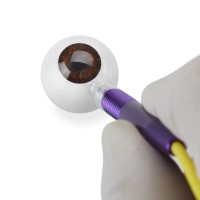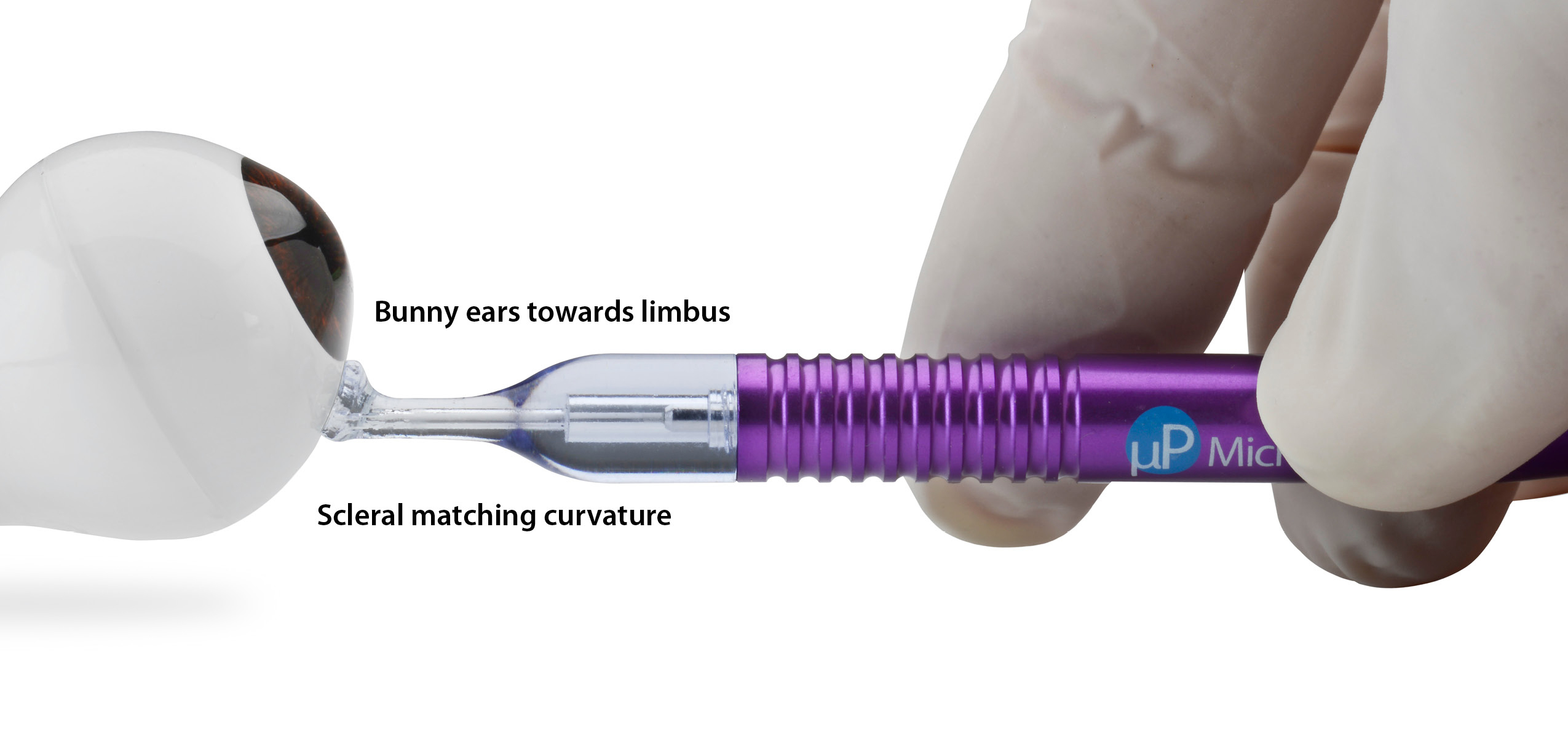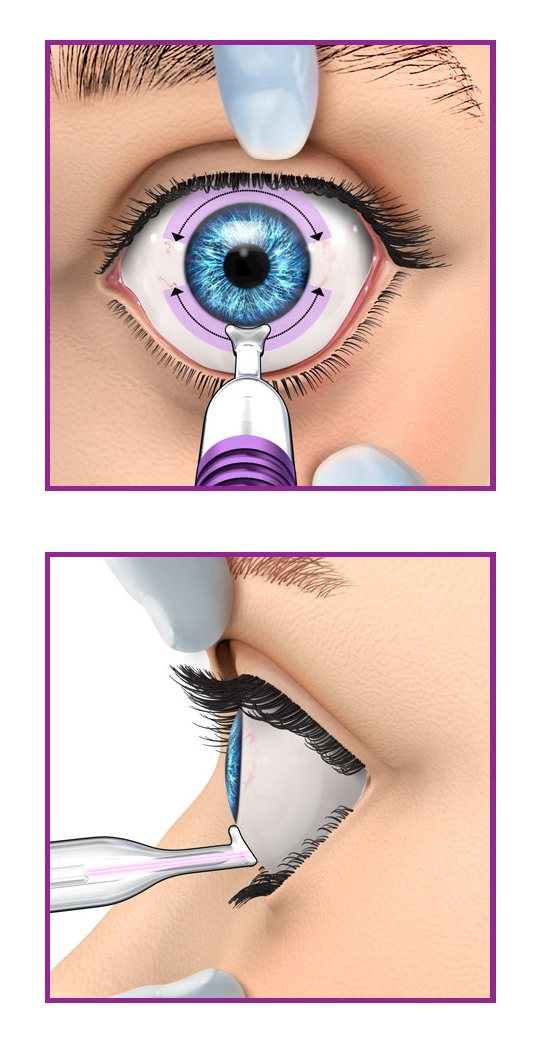
Versatile and Non-Incisional Glaucoma Treatment With MicroPulse® Transscleral Laser Therapy

A viscous, liquid interface (e.g. methyl cellulose) must be utilized to ensure proper light coupling to the conjunctiva. Place a drop on the undersurface of the probe footplate. Reapply as necessary. Not using a liquid interface could result in loss of up to 40% of energy. 
Orient the probe with the wide, curved side (bunny ears) aligned at the surgical limbus to ensure consistent treatment application. Be sure to view from directly above to avoid placement error because of parallax.
Maintain the footplate of the probe flat against the conjunctiva throughout the treatment with constant, gentle pressure. Do not rock the probe while sweeping.
Use 2500 mW, 50 seconds per hemisphere, and a duty cycle of 31.3%.
Sweep the probe along the limbus in an arc of 150 degrees for 10 seconds (avoid the 3 and 9 o’clock positions). Maintain a constant velocity during each pass.
Reverse the direction and repeat for a total of 5 passes.
Technique Instructions
Apply a liquid viscous interface to the bottom of the delivery device footplate and/or the eye to be treated. This is a mandatory requirement.
Orient the probe with the wide, curved side (bunny ears) aligned at the surgical limbus to ensure consistent treatment application. Holding the delivery device with the tips of your fingers allows you to rotate the probe as you sweep to keep the orientation aligned with the limbus throughout the procedure.
Keep the scleral-matching curvature flat and flush with the sclera throughout the procedure. It is important that you do not rock probe and keep full contact throughout the procedure.
Remember to avoid the 3 and 9 o’clock positions when treating.
The tapered stem can be used as your speculum if need be in very tight orbits.
The recommended power for MicroPulse TLT is 2500 mW.
The constants for MicroPulse TLT are 50 seconds per hemisphere (25 seconds per quadrant) and five passes per duration. Ten seconds per pass for hemisphere (five seconds per pass per quadrant). The duty cycle for is 31.3%.
Standard post-operative medication regimen is steroid drops QID x 1 week and then BID x 1 week. Cycloplegia is not required following MicroPulse TLT.